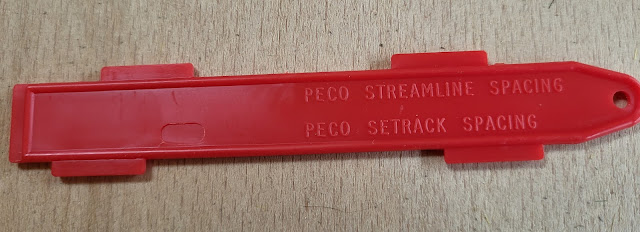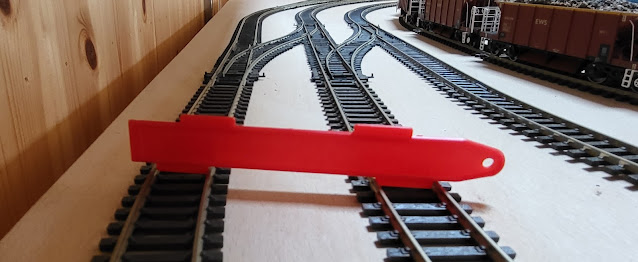The question you may have is why do the rectangles on each side have a different gap between them. As the wording says the wider gap is for Setrack which are the pre-shaped pieces of track. Because of the sharp radius of the curves in set track, there needs to be a gigger than scale six foot gap between the tracks to avoid long wagons and coaches catching each other as they pass each other going round the curves. The smaller gap is for Steamline track. This is the flexible track which allows you to create any shape of track that it will physically bend to. Obviously the intention is that the curves are a lot gentler then Setrack and therefore the scale six foot gap can be created without rolling stock hitting each other as they travel through these gentler curves. The interesting thing to note is that Setrack points when joined as a crossing will already put the two tracks apart at the Setrack six foot gauge whilst Streamline points will join together at the scale six foot gauge.
Whilst this is a Peco product most of the main manufacturers of track use the same geometry and dimensions so it is equally useful with these as it is on Peco track.
On my layout I have a mix of Setrack curves as they are curved better than I can achieve with flexible track but I do use the flexible track for the straight parts and small curves in sidings usually. Therefore on the straight parts I set the six foot to the Streamline dimensions
Hopefully over the next few weeks I can move what I term as My Last Great Project, on a bit more so these gauges will come in very useful.




No comments:
Post a Comment